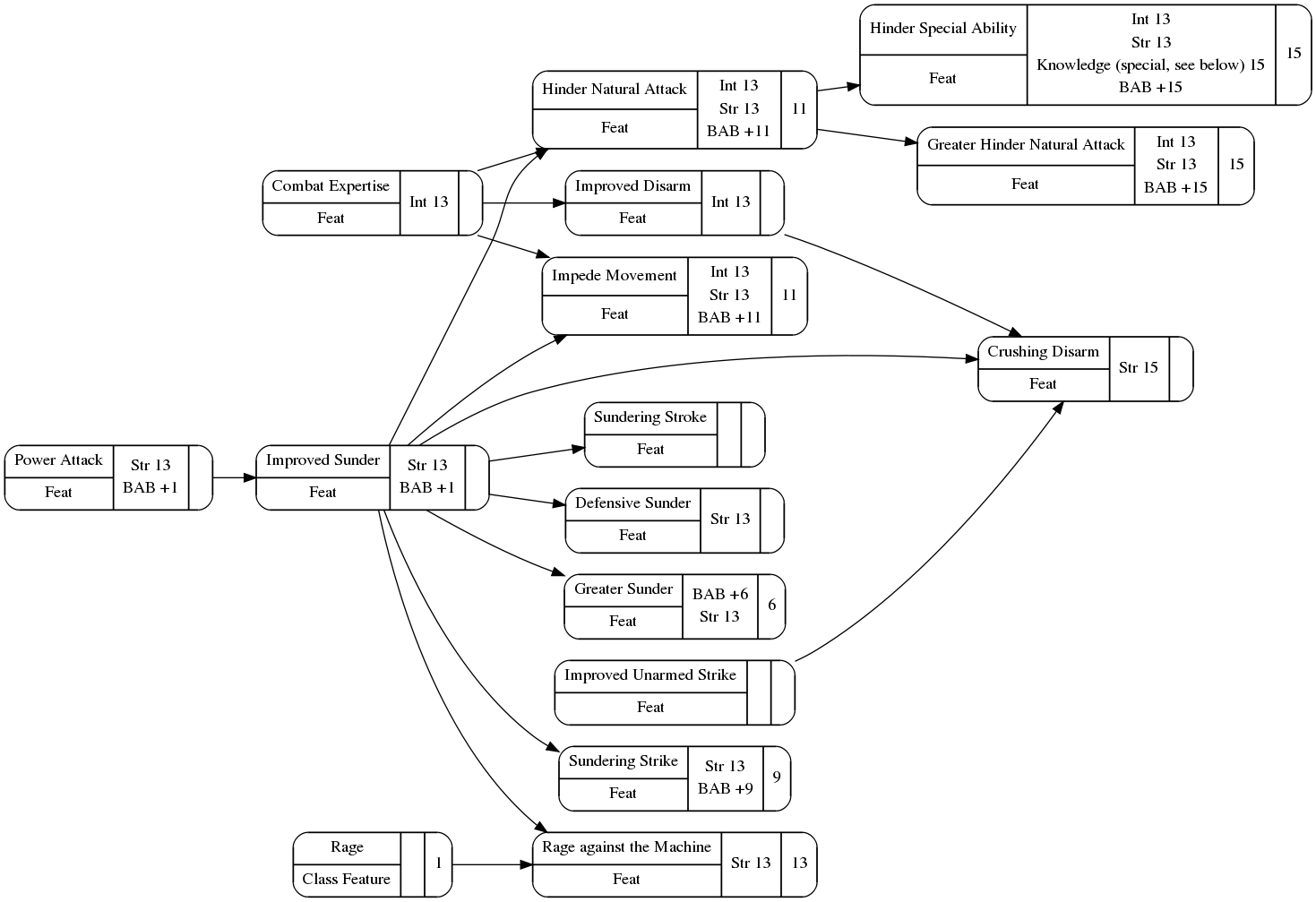 D&D isn’t just Dungeons & Dragons, after all.
D&D isn’t just Dungeons & Dragons, after all.
Though I started playing Dungeons & Dragons a bit more than thirty years ago (thank you, arithmetic, for that painful fact), and it does relate to today’s topic.
A couple days ago I posted about the Echelon Reference Series, an exhaustive (and exhausting!) work gathering Pathfinder gaming information and organizing it to make it more accessible.
A large part of that is finding better ways to present information. I only learned of Edward Tufte in the last couple of years, but I hold him in high regard because of his work in finding ways to convey information so it can be easily and quickly understood. I’m nowhere near his calibre, but I do try to do the same thing. Information that cannot be understood is noise.
One way I’m doing that with the Echelon Reference Series is to organize the information. To some degree this consists of making things more consistent, and reorganizing some things, and even rewriting small amounts here and there. In other places, though, I draw diagrams to help make information clearer and more readily understood.
Consider the following feats — I’ll leave out the text of what they do and include only their prerequisites. Presented in alphabetical order, the way you are likely to find them in a book:
- Combat Expertise: Int 13
- Crushing Disarm: Combat Expertise, Improved Disarm, Improved Sunder, Improved Unarmed Strike, Power Attack, Str 15
- Defensive Sunder: Improved Sunder, Power Attack, Str 13, BAB +1
- Greater Hinder Natural Attack: Combat Expertise, Hinder Natural Attack, Improved Sunder, Power Attack, Str 13, Int 13, BAB +15
- Greater Sunder: Improved Sunder, Power Attack, Str 13, BAB +6
- Hinder Natural Attack: Combat Expertise, Improved Sunder, Power Attack, Str 13, Int 13, BAB +11
- Hinder Special Ability: Combat Expertise, Improved Sunder, Power Attack, Knowledge (special, see below) 15 ranks, Str 13, Int 13, BAB +15
- Impede Movement: Combat Expertise, Improved Sunder, Power Attack, Str 13, Int 13, BAB +11
- Improved Disarm: Combat Expertise, Int 13
- Improved Sunder: Power Attack, Str 13, BAB +1
- Improved Unarmed Strike: —
- Power Attack: Str 13, BAB +1
- Rage against the Machine: Rage class feature, Improved Sunder, Power Attack, Str 13
- Sundering Strike: Improved Sunder, Power Attack, Str 13, BAB +9
- Sundering Stroke: Improved Sunder, Power Attack
In the actual books, these are scattered across dozens of pages, and in fact many books. It is not very easy to see how they all relate. I’ve made it a little easier here by putting them all in one place, but even so, understanding exactly how they connect is troublesome. It’s not as bad when starting with one that has prerequisites (you might ask “what do I need to take in order to get Crushing Disarm?”, and be told when you look at Crushing Disarm), but it’s almost impossible to go the other way (“I have Improved Sunder, what can I do with it?” involves a lot of reading, looking for feats that have Improved Sunder as a prerequisite.
So, I draw diagrams to help make sense of things. The one shown below (somewhat scaled down to fit on the page, click for the full-size version) was machine-generated from the data (the directed graph derived from the prerequisites and rendered using the dot program, part of the OSS Graphviz package). I use these diagrams to identify data disconnects (I have a diagram with ‘flight’ and ‘fly speed’, which are supposed to be the same thing, as separate nodes) and to guide me in arranging the diagram elements in the ‘pretty version’ I use in the book. There isn’t enough space in the ‘pretty version’ to legibly present as much information as I do in this diagram, but the layout is otherwise much the same.
I think it will help.

“Greater Hinder Natural Attack” <– What a mouthful!
How do you get dot to generate complex nodes like those?
It is a mouthful, and one of the reasons I’m designing Echelon talents as I am: I’m running out of synonyms for ‘more’. Improved, Greater, Superior, Supreme, etc…. I’d as soon say “Power Attack 7”.
As for the node appearance,
node [shape=record,style=rounded];"feat.greater-hinder-natural-attack" [label="{{Greater Hinder Natural Attack|Feat}|Int 13\nStr 13\nBAB +15|15}"];
My brain hurts. ;o)
My blog is GenWestUK
Hi Ros,
And you get the diagram that helps! Imagine what it’s like working from the text.
To be honest, I picked a diagram with only moderate complexity. It’s bigger than many, but still workable. It’ll go into the book with much the same layout, done with a different tool to be consistent with the rest of the book.
Many other diagrams are just a couple of nodes, dead easy.
Some, though, are massive balls of hair. I do not look forward to tackling those ones. Thankfully, though, for the most part they don’t tie really closely into any particular classes, races, or class features. Improved Unarmed Strike is a horrendous one, but even the monk class (which basically gets it for free) isn’t tightly bound to that feat. I can put it off for quite a while.
Weapon Specialization and Greater Weapon Focus are probably the worst of them, really, and I might simply list ‘class-specific’ feats like this.
The complexity I’m observing is one of the major drivers and influences behind talent design in Echelon.
Pingback: Visualizing Game Information | Keith Davies — In My Campaign - Keith's thoughts on RPG design and play.